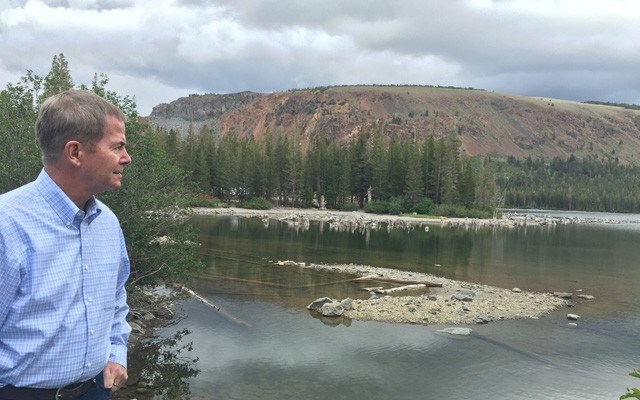Down in L.A. the "Go dirty for the drought" campaign is in full swing. Despite the catchy innuendo, it's not about your body. It's a campaign to get people to stop washing their cars as drought continues to grip California.
Meanwhile, Mammoth Lakes — the town and mountain resort of the same name located in the high Sierras northeast of Los Angeles — is contending with the drought in other ways. At 2,438 metres and dotted with alpine lakes, the mountain destination attracts visitors year-round, including some one million skiers annually. But snowfall has been declining drastically, and with the state mandating a 20-per-cent water use reduction, being water conscious has a whole new meaning.
To start, the last "wet" winter at Mammoth Lakes was 2010-11. Snowpack for the past two years has been abysmally low. In 2013-14 it was at 45 per cent of average; last winter with an early warm up, it was a paltry two per cent of average by April.
"What the drought has led to is, in fact, we have no surface water supply other than what's there in emergency reserve," says Patrick Hayes, general manager of the Mammoth Community Water District.
The town of Mammoth Lakes draws its water from three sources: surface water from the lakes basin; groundwater from volcanic aquifers and recycled wastewater, which accounts for about four per cent of supply and is mostly used on the golf courses. In a normal year the groundwater/surface water split is about 50/50; this year only one per cent is surface supply. (The mountain resort itself primarily uses its own groundwater supply for everything, including snowmaking.)
On top of that, because of local supplies the town has to go beyond the state's required 20-per-cent reduction and reduce water use by 30 per cent from 2013 levels. They hit the target in June, using 31-per-cent less water by targeting the main culprit — outdoor irrigation. It accounts for more than half the water used in summer months.
"Obviously that's an area of water use that's not necessary and can be controlled," says Hayes.
Watering restrictions are in place along with progressive penalties for breaching them. More importantly, the smart metering Mammoth Lakes uses can separate domestic from irrigation use, even for multiple users like a strata property. It can also capture hourly readings that determine if people are watering outside of restrictions.
"You can flush the toilet, have a shower and turn on the dishwasher all in one hour, and it won't compare at all to the amount of water used in an irrigation cycle," says Hayes.
"If you want to change behaviour, measure it and for water that means water metering with advanced systems that give you at least hourly interval data."
To cover costs and encourage conservation while still being fair, users throughout the water district pay a fixed charge and a volume charge according to the amount used. Residents and irrigation users are subject to what's known as block pricing or tiered pricing where the amount paid at each threshold increases exponentially. Commercial users pay a flat rate for volume "because they are really not in a position to control their usage." (No one uses once-through water-cooling systems.)
More water savings have been made through a long-term water main replacement program that's dried up leaks from a staggering 45 per cent water loss to a respectable 10 per cent, or less. As well, smart metreing can easily tell if there's a water leak on private property since the water runs 24/7. More than 200 such leaks have been detected and owners were quickly alerted.
If Hayes is confident on water conservation goals, so is Mammoth Lakes councillor John Wentworth that the resort will cope with the new precipitation regime
"Water for us means snowfall, and snowfall for us means skiing," says Wentworth. "We've been a wonderful downhill alpine skiing resort for almost 70 years and when it doesn't snow for four years, you're all of a sudden looking at paradigm shifts about how you live, how your economy is structured and your way of life.
"The fundamental thing is to make a change away from the idea that there's snow and then there is non-snow, to looking at our place as a destination 365 days a year. So if it snows in August, hey, we'll go skiing in August. If it doesn't snow in February we're riding bikes, trail running and doing all that other kind of stuff.




